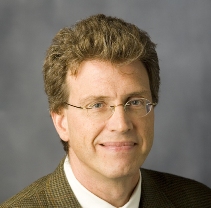 Yesterday, I wrote a review of Mark Chaves’ new book American Religion: Contemporary Trends (2011). In that post, I included a quote that offers a basic overview of something most people take for granted: the decline of liberal Protestant churches over the last several decades. As a result of this shift, there were twice as many Americans who “claimed affiliation with conservative denominations as with theologically more liberal ones” (p. 87).
Yesterday, I wrote a review of Mark Chaves’ new book American Religion: Contemporary Trends (2011). In that post, I included a quote that offers a basic overview of something most people take for granted: the decline of liberal Protestant churches over the last several decades. As a result of this shift, there were twice as many Americans who “claimed affiliation with conservative denominations as with theologically more liberal ones” (p. 87).
Chaves goes on to debunk the commonly held view that suggests the distribution shifted to what it is today because people left liberal congregations and joined conservative ones. He notes that the data shows that the flow of people making such a shift slowed during the time that conservative congregations were experiencing their greatest growth. He suggests four contributing factors to the declining number of liberal Protestants (p.87-91):
- Fertility. Those who affiliate with conservative churches have more children than do those who affiliate with liberal churches.
- Shift in flow of people between the two groups. Liberal congregations have been hurt most by the fact that conservative churchgoers no longer leave behind that tradition and join a liberal congregation as a part of their upward climb in social mobility as was the case a generation or more ago.
- Back door. When compared to liberal churches, conservative churches retain a higher percentage of children as they move into adulthood.
- Cultural. People have left liberal congregations because of their progressive stances on sexuality and other issues, while conservative churches have experienced no such membership loss.
So What?
While the actual number of liberal Protestants and the percentage of the American population affiliated with liberal Protestant denominations has declined dramatically, Americans are increasingly receptive to an ideology that is consistent with that of liberal Protestantism. In support of this argument, Chaves lists the following general cultural changes: “appreciating other religions, adjusting traditional belief and practice to modern circumstances” and “rejecting biblical literalism” (p.93).
- Prior to reading this post, if you had been asked why liberal or mainline Protestantism as a whole had been declining for several decades, how would you have responded?
- Do any of Chaves’ four contributing factors to the declining membership of liberal Protestantism surprise you? Do you have any alternative or additional reasons that may have contributed to the shift?
- How do you reconcile the declining liberal membership with an increased cultural receptivity to the ideas that this group holds in common?